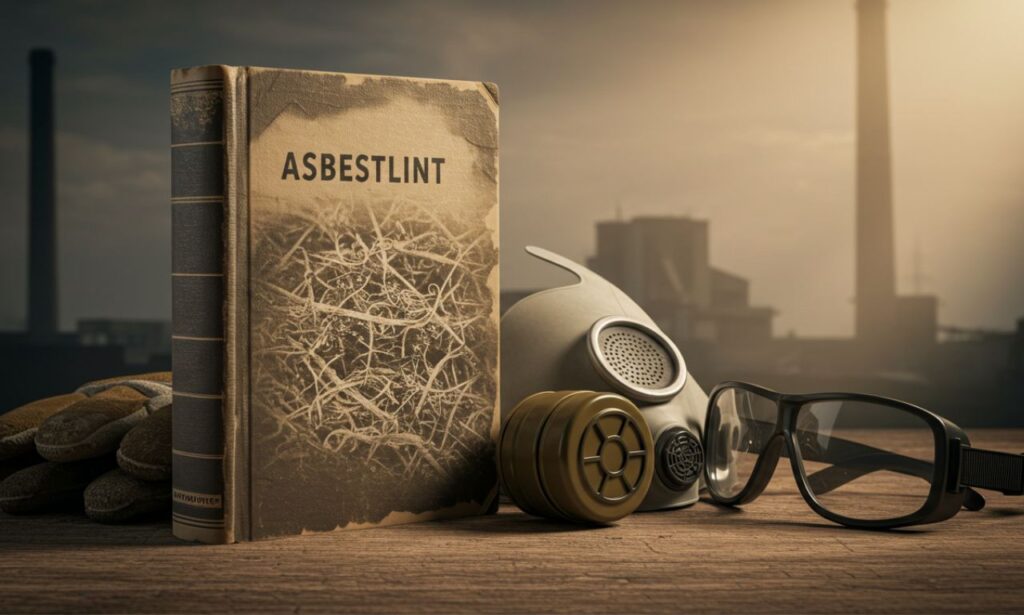In the world of construction and materials science, few words carry as much caution as asbestlint. Known as “asbestos tape” in English, asbestlint was once a common material used in insulation, construction, and fireproofing. However, its widespread use eventually led to one of the largest public health challenges of the modern era.
Today, the term asbestlint is associated with danger, strict regulations, and the importance of safe removal. But what exactly is it? Why was it used so widely? And why is it still relevant in 2025?
This comprehensive article explores the history of asbestlint, its applications, the health risks it poses, and the modern methods of detection and removal.
What Is Asbestlint?
Asbestlint refers to asbestos-containing tape or cloth, historically used for insulation, sealing, and fireproofing. It was typically woven from asbestos fibers and prized for its heat resistance, durability, and affordability.
Some of the common uses of asbestlint included:
-
Wrapping pipes and ductwork in industrial settings
-
Sealing boiler systems
-
Fireproof insulation in homes and buildings
-
Protective barriers in electrical systems
Because of its effectiveness, asbestlint became a staple in construction and manufacturing from the late 19th century through most of the 20th century.
The History of Asbestlint
The story of asbestlint is tied to the rise and fall of asbestos as a “miracle material.”
-
Late 1800s: Asbestos mining expanded rapidly, and woven asbestos products like tapes, ropes, and fabrics became available.
-
1920s – 1970s: Asbestlint reached peak popularity. It was cheap, easy to install, and widely used in both residential and industrial construction.
-
1980s – Present: Scientific research confirmed the severe health risks of asbestos exposure. Many countries banned its use and launched nationwide asbestos-removal programs.
Despite bans, asbestlint can still be found in older buildings, which means awareness and proper handling are crucial.
Why Asbestlint Was So Popular
To understand why asbestlint was used so extensively, we need to look at its unique properties:
-
Fire Resistance: Asbestos fibers do not burn, making asbestlint an ideal fireproof material.
-
Thermal Insulation: It could withstand extremely high temperatures, protecting pipes, boilers, and wiring.
-
Durability: Asbestlint was long-lasting and resistant to chemical damage.
-
Cost-Effectiveness: Compared to alternatives available at the time, it was inexpensive to produce and install.
In short, asbestlint seemed like the perfect solution — until its health dangers became undeniable.
Health Risks Associated with Asbestlint
The biggest problem with asbestlint is that asbestos fibers can become airborne when disturbed. When inhaled, these microscopic fibers can become lodged in the lungs and other tissues, leading to serious health conditions, often decades after exposure.
Some of the most common health risks include:
-
Asbestosis: A chronic lung disease caused by asbestos fiber buildup.
-
Lung Cancer: Prolonged exposure increases the risk of lung cancer, especially among smokers.
-
Mesothelioma: A rare but aggressive cancer that develops in the lining of the lungs, abdomen, or heart.
-
Pleural Plaques: Thickened areas on the lining of the lungs, often a sign of past exposure.
Because of these risks, is no longer used in construction, and strict regulations exist for its handling.
Asbestlint in Modern Buildings
Many homes, schools, and workplaces built before the 1980s still contain asbestlint. It is often hidden in:
-
Boiler rooms
-
Pipe insulation
-
HVAC systems
-
Attic insulation
-
Electrical panels
If left undisturbed and in good condition, may not pose an immediate threat. However, renovations, drilling, or damage can release asbestos fibers into the air.
How to Identify Asbestlint Safely
Identifying asbestlint on your own can be dangerous, as disturbing the material may release harmful fibers. Instead, follow these safe steps:
-
Do Not Touch It: If you suspect material is asbestos-containing, avoid disturbing it.
-
Hire a Professional: Certified asbestos inspectors can safely collect samples for testing.
-
Laboratory Analysis: Only a lab test can confirm whether a material contains asbestos.
Safe Handling and Removal of Asbestlint
If testing confirms the presence of , removal or encapsulation should be performed by licensed asbestos abatement professionals. The process usually includes:
-
Sealing off the affected area to prevent contamination.
-
Using specialized protective gear and HEPA-filtered equipment.
-
Carefully removing or sealing the material.
-
Disposing of asbestos waste according to local regulations.
Attempting DIY asbestos removal is not recommended — it can put you, your family, and even neighbors at risk.
Regulations Around Asbestlint
In most developed countries, strict regulations govern the handling of . These include:
-
Bans on New Use: Asbestos products are prohibited in new construction projects.
-
Mandatory Inspections: Certain renovations or demolitions require asbestos surveys.
-
Safe Disposal Requirements: Waste must be transported and disposed of at approved facilities.
Organizations like OSHA (Occupational Safety and Health Administration) and EPA (Environmental Protection Agency) in the U.S. enforce workplace safety standards related to asbestos.
Alternatives to Asbestlint
Modern construction uses safer, asbestos-free materials that offer similar benefits without the health risks. Common alternatives include:
-
Fiberglass Tape: Heat-resistant and widely available.
-
Ceramic Fiber Tape: Used in high-temperature applications.
-
Silica or Kevlar Insulation: Provides durability and thermal resistance.
These substitutes help ensure safety without compromising performance.
Asbestlint and Public Awareness in 2025
In 2025, public awareness campaigns have made great strides in educating homeowners, employers, and workers about asbestos safety. Governments, schools, and media platforms continue to emphasize:
-
The importance of asbestos surveys in older buildings.
-
Worker safety programs to prevent occupational exposure.
-
Funding for mesothelioma research and victim compensation programs.
Social media has also become a powerful tool for spreading information about asbestos risks and safe handling practices.
Tips for Homeowners Living with Asbestlint
If you live in a house that might contain , here are some practical steps to stay safe:
-
Do Not Disturb: Avoid drilling, sanding, or cutting suspect materials.
-
Schedule Inspections: Have a professional conduct an asbestos survey before renovations.
-
Monitor Condition: Check for signs of wear, damage, or crumbling insulation.
-
Plan for Removal: If is damaged, hire professionals to remove or seal it.
Why Asbestlint Awareness Still Matters
Even though is no longer widely used, the legacy of asbestos-related illnesses continues. Mesothelioma diagnoses still occur every year, often among people who were exposed decades ago. Raising awareness helps prevent new cases and ensures safer homes, schools, and workplaces.
Conclusion
The story of asbestlint is a reminder of how a material once hailed as revolutionary can later be recognized as dangerous. Understanding what is, where it might be found, and how to handle it safely is critical for protecting your health and your environment.
As we move forward in 2025, the priority is clear: raise awareness, enforce safety standards, and remove where necessary. Whether you are a homeowner, builder, or employer, knowing how to deal with asbestos-containing materials is an investment in health and safety for generations to come.






